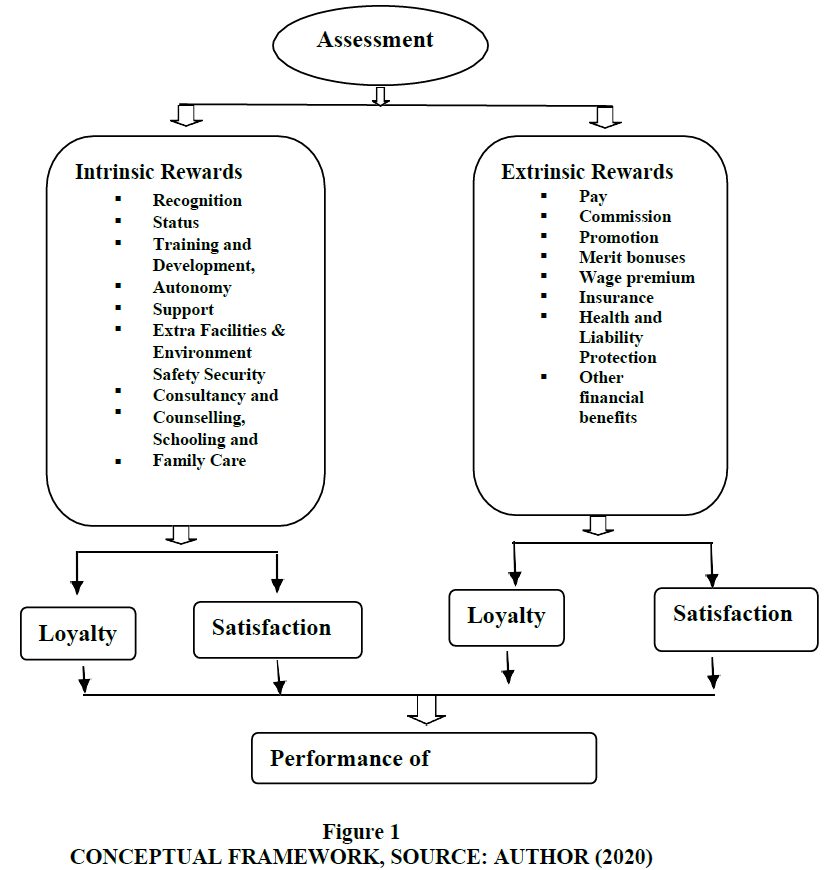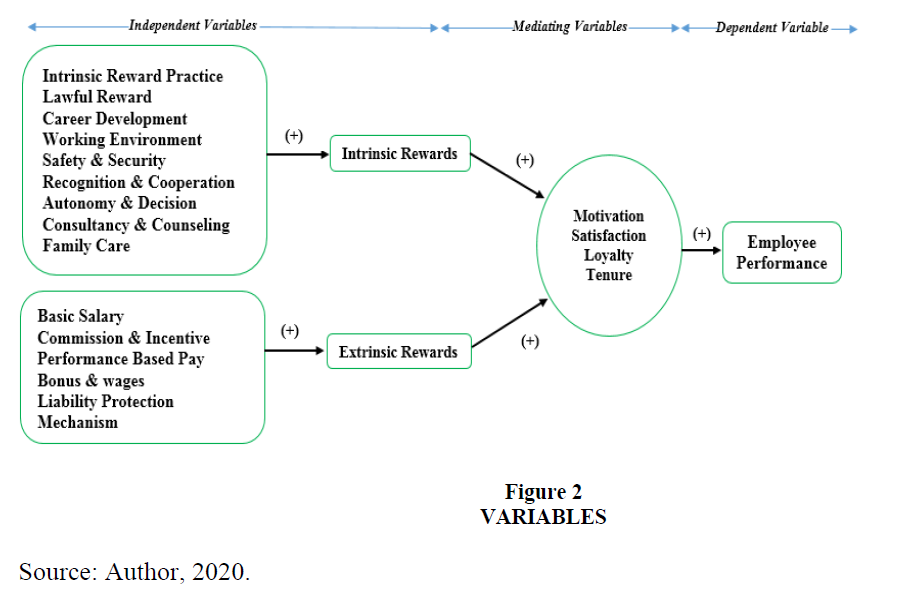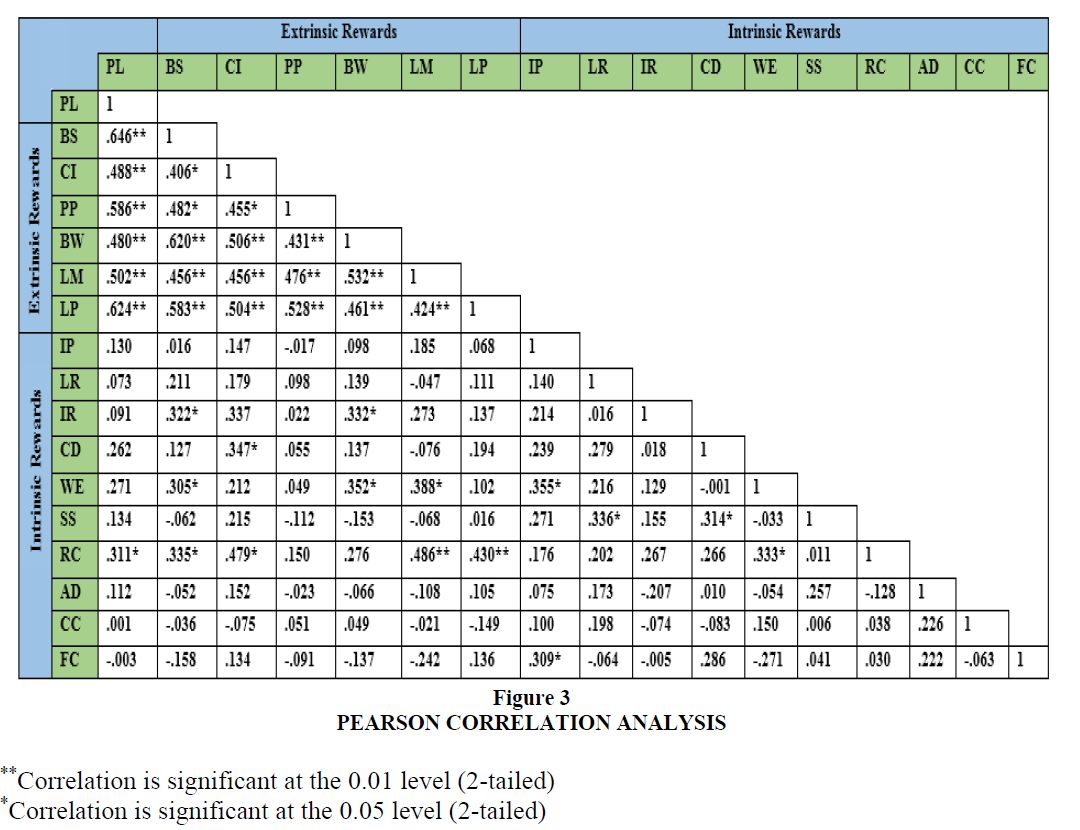Research Article: 2021 Vol: 13 Issue: 3
Assessment Of Intrinsic And Extrinsic Rewards On Employee Performance: A Study Of Garments Industries In Bangladesh
Md. Hasan Mia, University of Dhaka
Abstract
People are one of the most crucial factors of production. The employee is the heart of the labor-intensive garments industry in Bangladesh. The growth, competitiveness, survival, performance mainly rely on the efficiency and performance of its human resource. This study aims to assess the impact of intrinsic & extrinsic rewards on employee performance. It intends to examine whether intrinsic rewards or extrinsic rewards have more impact and influence the overall performance like productivity, the profitability of employees in the garments industry whereas motivation, satisfaction are considered as mediating variables. The study is based on the self-determination theory (SDT) & intrinsic and extrinsic theory of motivation. To serve the purpose, five (05) most renowned garments factories have been selected based on their performance to represent the whole industry. A questionnaire is also surveyed to 50 employees of the top, mid, and lower levels of employees of the selected garments factories. The data have been analyzed by correlation, regression, ANOVA and Chi-square test using SPSS & Strata software. It is found that all independent variables have a significant correlation with performance. The study also reveals that employee performance in the garments industry mostly relies (83.1%) on extrinsic rewards & intrinsic rewards have a low level (76.1%) of impact on motivation, satisfaction, and overall performance.
Keywords
Intrinsic & Extrinsic Rewards, Performance, Garments Industry, Bangladesh.
Introduction
Readymade Garment is a labor-intensive sector. There are about 4500 cloth factories where about 4.1 million employees working regularly (BGMEA, 2018). According to BGMEA garments, there are 45 lacs people directly related to the garments industry for their livelihood. This covers 36% of employment where 60.8% are women and 39.20% male in Bangladesh (Akter, 2019). RMG sector generated USD 30.61 billion in the fiscal year 2018 (Hossain et al., 2019).
It is the prime concern of HR executives do get things done efficiently and effectively by the motivated workforce. Hence, first, they need to explore what makes the employee fully motivated for maximum performance. Both the intrinsic and extrinsic rewards are provided as a means of influential factors of employee performance (Allen & Kilmanns, 2011).
Here, the term performance refers to high productivity, profitability, loyalty, long tenure, etc. Since, motivated workforce tends to be a more loyal, dedicated, efficient, and high performer which leads to goal attainment, survival, and success in the market (Elizabeth et al., 2015). Before designing incentives, HR professionals need to explore either the intrinsic and extrinsic rewards influence employees to perform more and loyalty in the workplace (Akter, 2019; Hossain et al., 2019).
The garments industry is one of the potentials and fast-growing industry has brought both name and fame for the country despite lagging educationally and technologically. The annual export of RMG is 40535.04 million US dollars which are 84.21% of the total export of the country (BGMEA, 2018-19). To compete and beat technology-based China and Vietnam, the cheap labor force can be an edge to ensure competitive advantages.
Most of executive and employee is not aware of incentives and no initiatives are taken to improve the performance of the employee in this regard. Hence, this study will reveal the factors that determine motivation and performance. It also will indicate and provide direction to executive and HR planners to put appropriate weight on the intrinsic and extrinsic rewards for a motivated workforce and greater performance.
Statement of the Problem
The study intends to assess how intrinsic and extrinsic rewards influence the performance of the employee in the workplace by increasing motivation and loyalty (Fay & Thompson, 2012). It is also tried to find out the correlation between these reward systems and employee performance in garments industries.
Research Objectives
Primary Objective
The primary objective of the study is to assess the extent to which the intrinsic and extrinsic rewards have an influence on employee performance and loyalty in the workplace.
Specific Objectives
1) To identify the factors which influence most for high performance in the workplace of the garments industry in Bangladesh.
2) To address the factors responsible for low performance and demotivation.
3) To find out the degree to which intrinsic and extrinsic reward has an impact on performance.
Hypotheses
H1: Employee performance significantly correlated with the factors of intrinsic rewards.
H2: Employee performance significantly correlated with the factors of extrinsic reward.
H3: Intrinsic & extrinsic rewards significantly influence employee performance.
H4: Employee performance of the garments industry significantly depends on intrinsic & Extrinsic Rewards.
Review of Related Literature
The readymade garments sector has created a vast opportunity in securing the second position in the world export of garments products (Thouhidur, 2017; Abdullah, 2018). Bangladesh can hold the second position due to the cheap labor with skilled and unskilled employees. Clerk et al., (2014) found in a study that productivity and efficiency are not at the international level. Despite different disaster like the Rana Plaza collapse, loss of GSP, market fall in western countries, Bangladesh is still able to hold the position because workers are dedicated and satisfied with minimum wage to lead their basic necessity and often, they need to go for a strike and raise voice for their due right. Still, the working environment of the garments industry is not up to the mark. Most of the factories are overcrowded (Mizanuzzaman, 2016; Islam, et al., 2014). Employee motivation and performance is the level of ability and maximum effort given by the employees towards the goal of the organization which is relevantly compatible with their interest and individual goal (Sabbir, 2016; Mottaleb et al., 2011). Employee behavior, motivation, and performance are directed by the pattern of reward system practices in the organization (Özutku, 2012).
Reward System
Well-designed rewards system encourage to exert more effort and better performance and to attract and retain the skilled and competent. Rewards can be a monetary and non-monetary form (Elizabeth et al., 2015; Gilbreth, 1973; Koerner et al., 1997). The employee of the garments industry already treated poor rewards where the female are the worst sufferer. There are skilled (50%), semi-skilled (20%), and unskilled employees (30%). They are mostly paid based on their performance (Shaheen et al., 2016).
Intrinsic Rewards
Refer to the facilities which accelerate the intrinsic motivation of an individual. This refers the rewards such as career and development facilities, training and development facilities, transportation, better working environment, measurements for hygiene, safety and security, etc. meanwhile the term.
Extrinsic Rewards
It refers the monetary incentives and other facilities offered for the contribution of the employee such as the basic salary, bonus, incentives, perquisites, overtime, allowances, festive bonus, etc. (Islam, 2013; Fay, & Thompson, 2012).
Rewards & Performance
All activities of HRM relates to increasing the level of productivity by efficient use of human and non-human resources (Lazear, et al., 2015). Extrinsic rewards refer to the incentives package tangible in nature to the motive worker (Mullins, 2005; Armstrong, 2003). Stoner & Bernard (2005), suggested some incentives and components for better performance namely salary and financial amities. The research found that the rewards system has a direct impact on employee performance (Rizwan, et al., 2016). Frederick Taylor (1911) denoted that money is the most important factor for motivation and performance. Hills et al., (2014) argues that the employee who already perceives job as worthy are satisfied by financial rewards and incentives.
Yang (2018) proposed that extrinsic rewards such as praise, promotion, vacation, favorable working environment and work hour, participation in decision making, support and feedback, social activities, etc. impacts more on performance than intrinsic rewards. But the intrinsic and extrinsic reward is equally important (Kotelnikov, 2010; Harpaz, 2019). Intrinsic rewards develop the persistence where extrinsic rewards encourage to put extra effort (Davis, & Kleein, 1997; Awasthi & Pratt, 1990).
A recent study of 290 participants revealed that intrinsic rewards have a positive impact on employee performance (Rizwan et al., 2015). Poor rewards result in dissatisfaction, low morale, high turnover, and loss of commitment & productivity (Rizwan et al., 2016). In the perspective of the garments industry in Bangladesh, the factors responsible for high performance are labor and casual incentives such as payment system, bonus, commission, benefits, and facilities such as good working environment, transport, housing, health care, education, Hygiene, and safety, training, and development, etc. (Islam, 2013; Akter, 2019; Hossain et al., 2019.
Motivation
Motivation is a psychological process (Kinicki & Kreitner, 2006). In cognitive evaluation theory (CET) intrinsic motivation refers to self-determined and self-directed learning (Ryan & Deci, 1985) Rewards system increase motivation which leads to greater performance of the employee in the workplace (Walters et al., 2019).
Job satisfaction & Performance
According to agent theory, there must be a deviation and conflict of interest and the agent will prioritize his/ her interest first. In the case of the garments industry employee of different levels can play the role of agent (Jensen & Meckling, 1976). Equity theory suggests that employee motivation mainly depends on the balance of facilities they are getting and the facilities offered by the competing company. It facilitates predicting how individuals react to the under reward and over-rewarded situation and ensure assessment of inputs and outcomes they get from the organization (Barker et al., 2012). On the other hand, contingency theory advocates that pay structure and incentives depend on the market and environmental forces within which the organization renders its functions (Trevor, 2011).
A Recent Study of Research
As no single study shows evident which rewards system is a more effective and appropriate indicator for better performance in the workplace ((Hossian, et al., 2019; Özutku, 2012). Hence, several relevant studies are analyzed to find out whether intrinsic or extrinsic rewards influence the performance of employees of garments industries in Bangladesh most. Fay and Thompson (2012) surveyed 231 organizations and find out five categories of rewards influence employee performance most such as basic pay, incentives, benefits programs, perquisites, and long-term incentives. To indicate and level success criteria respondents were asked to rank seven indicators.
Allen & Kilmanns (2011) examined the impacts of reward practices on the performance and behavior of employees. Extrinsic reward practices, for instance, employee security, profit, and gain sharing have a significant relationship with a performance where intrinsic rewards did not find a significant relationship.
Base pay structure is the incentives that typically employees get for their job which need to determine by collective agreement (Faruq, 2014; Allen et al., 2003). But base pay is not enough to ensure employee motivation and performance. In the case of the readymade garments sector base pay can be considered as the motivational factor but at the upper-level psychological needs get prior concern (Stakovic & Luthans, 2014; Kennon, et al., 2017).
Karmaker et al., (2018) identified in their study that training and skill enhancement, policy, legislation and organizational practice, availability of good working equipment are the determinants of the performance of the employee in garments factories in Bangladesh.
McKenzie & Lee (1998) found that short-term incentives cannot satisfy the employee because their interest is not aligning with the organizational goal and strategy. In most cases pay for performance and daily wages are not able to win the employee's trust and loyalty. With globalization, the pattern of employees changes over time. Work-family balance, minimum working hours, working environment, and long safety and security drives more than short term financial incentives (Thouhidur, 2017, CPD, 1999). Hossain et al., (2010) argues that the living and economic status of RMG worker is below the standard and worse than another social group in Bangladesh in Table 1. Low wage, substandard living, deprivation create industrial unrest, strike, dissatisfaction, and reduction of overall performance in the workplace indicated by Afsar (2001).
| Table-1 Theoretical Review of Different Authors on Concerning the Research Topic | ||
| Authors | Theory | Supportive theory for motivation and performance |
| Edward L. Deci & Richard Ryan (1991) (Kennon, et al., 2017) | Self-determination theory (SDT) | The self-directed theory of motivation describes the goal-directed behavior of an individual which includes intrinsic and extrinsic motives. When individual progress to the continuum of autonomy the motivation and performance increase & vice-versa. |
| Frederick W. Taylor (1990) | Motivation theory | Motivation is how personal tasks and environment influences behavior and performance. Scientific management theory gives strong evidence that financial compensation intensifies the motivation and performance in the workplace. |
| Gerald E. Ledford (2013) | Cognitive, attribution, and self- determination Theory |
Cognitive and attribution theory claims sometimes extrinsic rewards undermine intrinsic motivation. Meanwhile, self- determination theory states that under some conditions intrinsic motivation can be increase by extrinsic rewards. |
| Griffin, (1990) | Relation of motivation & performance | Employee performance is determined by three factors namely ability, work-related environment, and motivation. Performance is the product of employee ability and motivation (P= A*M) |
| Hergberg, F. (1987) | Two-factor theory | The job-related hygiene factors help to prevent dissatisfaction and motivating factors accomplishment increases motivation and influence to exert more effort and productivity. |
| Carolyn Wiley (1995) | Factors | The most important factor for performance is the good wage, job security, promotion, and organizational growth, an interesting job, and appreciation by the supervisor. |
| Kanfer, R. (1992) | Personality traits | Three clusters can be considered as motivators and performance such as personality traits-based view, cognitive and decision approach, and self-regulation perspective. |
Research Gap
Therefore, for designing an efficient and effective incentive plan, HR professionals need to trace and provide appropriate weight on intrinsic and extrinsic rewards to increase employee performance. But there is no available research and study of garments employees from the perspective of Bangladesh. Hence, this study will help the HR manager to design a proper incentive plan, win a loyal workforce, and improve the current performance to survive in the global competitive market in Figure 1.
Conceptual Framework
Delimitations and Limitations
1) The main limitation is that most of the respondents are reluctant to provide information due to the confidentiality of the company.
2) Moreover, since there is no available research regarding this topic, it causes sufferings of the scarcity of information and resources needed to perform the research smoothly.
3) Inexperience and time limitation is another hindrance faces through this research.
4) Inadequate funding is another limitation.
5) Some of the respondents found it very rigid and not co-operative in sharing information.
Research Methodology
Research Type
This is applied research. The study is based on both qualitative and quantitative analysis (mixed approach). The result and relationship of the different variables are shown with the help of numbers and appropriate description. The study also tries to find out the causal relationship of dependent (employee performance and loyalty) and independent variables (intrinsic and extrinsic rewards) which indicates the study as causal research.
Population
Some so many employees work in the garments industry in Bangladesh. There are about 4500 cloth factories where about 4.1 million employees working regularly (Annual Report of BGMEA, 2018). For collecting primary data, the employees of five (05) most renowned garments organizations (such as Ha-Meem group, Alliance group, Ananta Apparel Ltd., Anowara Knitting Ltd., and Apparel fashion BD) have been surveyed who represent the whole garments industry.
Sampling Design
For the population of 4.1 million garments industry, a sample of 384 was selected by the following formula but 50 samples
Here,
 n = Required Sample Size
n = Required Sample Size
p= Estimated proportion of success assumed to be 0.50
q = 1-p, or estimated proportion of failures
E = Square of the maximum allowance of error/ degree of accuracy as reflected by the amount of error that can be tolerated in the fluctuation of sample proportion P about the proportion P the value
Sample Size
To analyze either intrinsic or extrinsic rewards influence the employee performance most, 50 employees of the above five organizations will be surveyed. This is because they are in a leading position in this industry and hence, their employee will best represent the whole garments worker of the country.
Sampling Method
The primary data will be collected with the help of a questionnaire survey. To serve this purpose, a sample of 50 workers of representative garments industry will be taken. Purposive sampling method will be used in this regard. This is because organization-wise employees vary and the sample size for each organization is selected shown in the Table 2.
| Table 2 Organization-Wise Sample Size | ||||
| Code | Name of Org. | No. of employees | % of total employees | Sample size |
| HM | Ha-Meem Group | 5000 | 41 | 21 |
| AG | Alliance Group | 4000 | 33 | 17 |
| AP | Ananta Apparel Ltd. | 2250 | 18 | 09 |
| AK | Anowara Knitting Ltd. | 257 | 2 | 2 |
| AF | Apparel Fashion BD | 580 | 1 | 1 |
| Total | =12087 | =100 | =50 | |
Data Collection Method
This is an empirical study. Hence, both primary and secondary data will be used.
Primary data the primary data will be collected from the questionnaire survey and observation.
Secondary data the secondary data will be collected from respective organizations, reports, websites, articles, books as mentioned below in Table 3.
| Table 3 Secondary Sources | |
| Source Name | Year & Comments |
| Annual report of BGMEA & selected organizations |
2018-2019 |
| Published Articles | 2017-2019 (Harvard business review and Google scholars) |
| Books, paper, and manuals | Related to motivation, reward system, and performance |
| Websites | BGMEA selected organizations |
Design of Questionnaire
For collecting primary data and test the Hypotheses a questionnaire containing sixteen (16) questions regarding intrinsic and extrinsic rewards related to their performance and loyalty. The questionnaire will be designed on a Likert scale. The factors of motivation, incentives, and performance of the employee will get the prime concern in the formulation of the questionnaire in Table 4.
| Table 4 Questionnaire Design | ||
| Independent variables | Impact on Dependent variable | No. of statements |
| Intrinsic rewards | Performance | 06 |
| Extrinsic rewards | Performance | 10 |
The Dependent and Independent Variable
Data Analysis
Quantitative data will be analyzed with the help of descriptive statistics, correlation, and simple regression analysis. By correlation and regression analysis we will try to find out the degree to which dependent and independent variables relate to each other. For this purpose, following formula will be used:
Pearson Correlation of Co-efficient

Here,
r = correlation of co-efficient of dependent (Y= Performance) and independent (X= Intrinsic and extrinsic rewards) variables
ΣXY = Sum of the product of X and Y
ΣX = Sum of X
ΣY = Sum of Y
ΣX2 = Sum of the square of X
ΣY2 = Sum of the square of Y
Simple Linear Regression Analysis
Y= A+ B(x1) + B(x2) + B(x3) + B(x4) +… .................................................... + B (xn)
Here,
Y= Dependent variables (Performance of employee)
A= Y intersect
B= Slope of the equation
Xn = Independent variables (Intrinsic and extrinsic rewards).
Presentation of Data
A simple correlation and regression are also conducted to identify the relationships among variables and test the hypothesis of the study. The result will be shown with the help of a diagram, pie chart, table, and histogram and bar diagram. Qualitative data use is presented by an appropriate Table 5 and Figure 2.
| Table 5 Variables for Correlation | ||||
| Dependent Variable | Independent Variable | |||
| Extrinsic Rewards | Intrinsic Rewards | |||
| Performance Level (PL) | BS | Basic Salary | IP | Intrinsic Reward Practice |
| CI | Commission & Incentive | LR | Lawful Reward | |
| PP | Performance-Based Pay | IR | Intrinsic Rewards | |
| BW | Bonus & wages | CD | Career Development | |
| LM | Liability Protection Mechanism | WE | Working Environment | |
| LP | Liability & Performance | SS | Safety & Security | |
| RC | Recognition & Cooperation | |||
| AD | Autonomy & Decision | |||
| CC | Consultancy & Counseling | |||
| FC | Family Care | |||
Instrumentation
For analyzing data, advanced data analysis software and the tool will be used such as MS word and excel, SPSS, Strata, etc.
Analysis & Findings
Demographics of Respondents
There were 50 respondents intended to survey but responses of actually 43 employees found valid of which 37% are male and 63% is a female employee. There are 10 respondents (15-24), 6 respondents (25-30), 10 respondents (31-45), and 15 respondents at the age ranged (46-60) years.
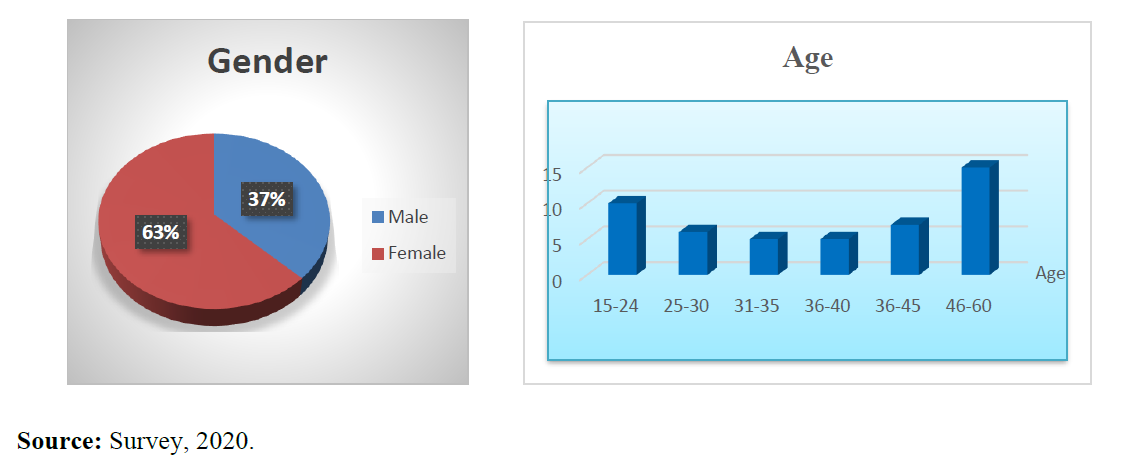
The following graph shows responses on variables namely employee performance level, intrinsic and extrinsic rewards. This is an indication which direction the relationship of intrinsic and extrinsic rewards on employee performance in garments industries in Bangladesh.
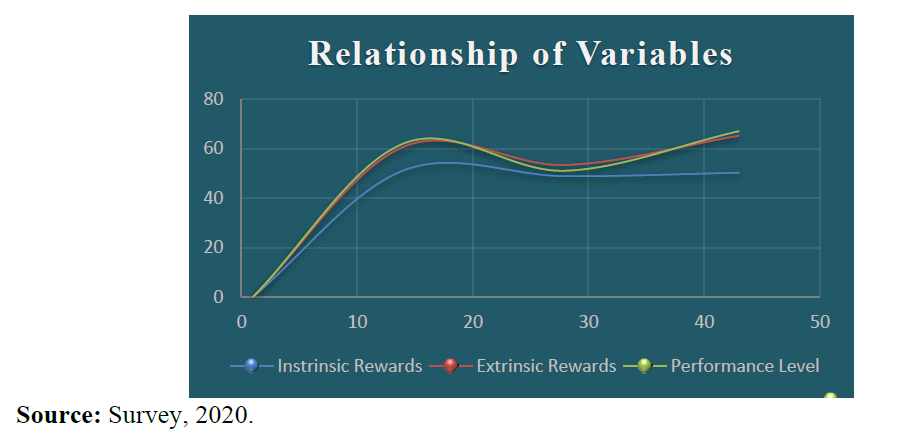
The above graph indicates the relationship between intrinsic and extrinsic rewards on performance level. It shows that extrinsic rewards are closely related and have a greater impact on the performance level of employees compared to intrinsic rewards.
Assessing the Factors for Higher Performance on an Employee of Garments Industries in Bangladesh
To find out the factor of the reward system which influences the overall performance of the employee of garments industries in Bangladesh we intend to find out the correlation among dependent and independent variables. For that we considered the following hypotheses:
H0 : Employee performance is not correlated with factors of intrinsic rewards.
H1: Employee performance significantly correlated with factors of intrinsic rewards.
H0: Employee performance is not correlated with factors of extrinsic rewards.
H2: Employee performance significantly correlated with factors of extrinsic rewards.
This analysis helps to identify which variable has a greater impact on performance and which not. Different intrinsic and extrinsic rewards systems are found responsible for accelerating employee performance. This correlation analysis is conducted to find out the relation between employee performance & the following independent variables in Table 5.
The Table 5 shows the correlation of all independent variables (Intrinsic & extrinsic rewards) with the dependent variable (Employee performance) examined in this study. In the case of employee performance in the garments industry, the Pearson correlation of coefficient shows that extrinsic rewards have strongly correlated. Elements of extrinsic rewards such as basic salary (0.646), commission and incentives (0.488), performance-based pay (0.586), bonus and wages (0.480) are highly correlated with performance in Figure 3.
Whereas, lawful and fair rewards practice, the liability protection mechanism also plays a significant role in increasing the overall performance of the employee.
Meanwhile, the intrinsic rewards such Career Development (0.262), Working Environment (0.271), Safety & Security (0.134), Recognition & Cooperation (0.311), Autonomy & participation in decision making (0.112), Consultancy & Counseling (0.001), Family Care facilities (0.003) has very low correlation on performance in garments industry of Bangladesh.
So, in the fine line, we can say the performance of garments employees mostly depends on extrinsic rewards.
Addressing the Factors Responsible for Low Performance & Demotivation
H0: Intrinsic & extrinsic rewards don’t influence employee performance.
H3: Intrinsic & extrinsic rewards significantly influence employee performance.
In multiple linear regression analysis, the dependent variable (Performance) is presented in terms of independent variables (Intrinsic & Extrinsic Rewards) in a linear equation. Hence, the value of each independent variable denotes the level of significance to the dependent variable. To assess how intrinsic rewards impact employee performance, we found the values on the above model of multiple linear regression. Here, Table 6 shows that about 83.10% of employee performance depends on intrinsic and extrinsic rewards and there is a significant correlation between the dependent and independent variables.
| Table 6 Result of Simple Linear Regression Analysis | ||||||
| Model | R | R Square | Adjusted R Square | Std. The error of the Estimate | Change Statistics | |
| F Change | Sig. F Change | |||||
| 1 2 |
0.831a 0.761b |
0.691 0.579 |
0.500 0.509 |
0.71119 0.70474 |
3.628 8.266 |
0.002b 0.000b |
b. Predictors: (Constant), Extrinsic Rewards.
The value of R square is 0.691 & 0.579 (R coefficient =0.831 & 0.761; p<0.05) and adjusted R square is 0.500 & 0.509. So, we can say that independent variables can predict and explain approximately 50% of the dependent variables. The significant level is fond 0.002. Whereas the extrinsic rewards indicate and predict approximately 51% of dependent variables (R coefficient =0.761; p<0.05 & adjusted R square =0.509).
The following Table 7 (Result of Multiple Regression Model) contains the independent variables used to predict the impact on the performance of the employee in the garments industry. This Table also includes the contribution of each variable to predict the dependent on variables with standard error and level of significance.
| Table 7 Result of Multiple Regression Mode | |||||||
| Model | Unstandardized Coefficients | R2 | Standardized Coefficients | t | Sig. | Impact | |
| B | Std. Error | Beta | |||||
| (Constant) | -2.390 | 1.119 | -2.136 | .042 | |||
| Basic Salary | .486 | .211 | .393 | 2.309 | .029 | Significant | |
| Commission & Incentive | .647 | .203 | .343 | -.232 | .818 | Significant | |
| Performance-Based Pay | .319 | .189 | .285 | 1.689 | .103 | Significant | |
| Bonus & Wages | .231 | .217 | .225 | .140 | .889 | Significant | |
| Liability Protection Mechanism | .179 | .214 | .98328 | .151 | .834 | .412 | Significant |
| Liability & Performance | .263 | .261 | .174 | 1.007 | .323 | Significant | |
| Intrinsic Reward Practice | .664 | .181 | .053 | -.355 | .726 | Insignificant | |
| Lawful Reward | -.192 | .119 | -.218 | -1.609 | .120 | Insignificant | |
| Intrinsic Rewards | -.132 | .145 | -.129 | -.914 | .369 | Insignificant | |
| Career Development | .187 | .163 | .164 | 1.146 | .262 | Significant | |
| Working Environment | .190 | .164 | .176 | 1.162 | .256 | Significant | |
| Safety & Security | .262 | .155 | .251 | 1.688 | .103 | Significant | |
| Recognition & Cooperation | -.011 | .196 | -.010 | -.057 | .955 | Insignificant | |
| Autonomy & Decision | .066 | .123 | .073 | .535 | .597 | Insignificant | |
| Consultancy & Counseling | .044 | .133 | .042 | .334 | .741 | Insignificant | |
| Family Care | .085 | .149 | .086 | .568 | .575 | Insignificant | |
Analysis of multiple regressions (Table-9) reveals substantial impact on different variables and reward system on employee performance.
Basic Salary (Beta=0.393, t=2.309), Commission & Incentive (Beta= .343, t= .232), Performance-Based Pay (Beta=0.285, t= 1.689), Bonus & wages (Beta=0.225, t= .140), Liability Protection.
(Beta=0.151, t=.834), Mechanism Liability & Performance (Beta=0.174, t= 1.007), safety & security (Beta= .251, t= 1.688), significantly related to performance at p< 1.00. Meanwhile, intrinsic reward practice (Beta=0.053, t= -0.335) lawful rewards (Beta= -0.218, t= -1.609), Recognition & co-operation (Beta= -0.010, t= -0.057), Autonomy & decision (Beta=0.073, t=0.535), consultancy & counseling (Beta= 0.042, t= 0.334), family care (Beta= 0.086, t= 0.568) etc. reported with negative significant relationship with employee performance. Lawful reward, recognition and co-operation have poor Beta value and have been rejected.
The ANOVA test shows the calculated sig. value 0.002 & 0.000. The Table 8 of sig. value 0.05 is greater than the calculated value. So, the null hypothesis is rejected at 5% & 1% level of confidence. So, employee performance significantly depends on intrinsic and extrinsic rewards. Therefore, factors such as intrinsic and extrinsic rewards have a tremendous impact on employee performance in the garments industry of Bangladesh.
| Table 8 Anova Test | ||||||
| Model | Sum of Squares | Degree of freedom | Mean Square | F | Sig. | |
| 1 | Regression | 29.361 | 16 | 1.835 | 3.628 | 0.002b |
| Residual | 13.150 | 26 | 0.506 | |||
| Total | 42.512 | 42 | ||||
| 2 | Regression | 24.632 | 6 | 4.105 | 8.266 | 0.000b |
| Residual | 17.880 | 36 | 0.497 | |||
| Total | 42.512 | 42 | ||||
To Find Out the Degree to which Intrinsic and Extrinsic Reward has an Impact on Performance.
To assess the impact of intrinsic and extrinsic rewards on employee performance of the garments industry in Bangladesh, we considered the hypotheses below. Based on the responses by the participants the Table 9 of observed value is formed.
| Table 9 Observed Value for Chi-Square Test | ||||||
| Rewards | Highly Satisfied | Satisfied | Neutral | Dissatisfied | Highly Dissatisfied | Total |
| Extrinsic | 109 | 112 | 24 | 12 | 1 | 258 |
| Intrinsic | 17 | 159 | 116 | 114 | 24 | 430 |
| Total | 126 | 271 | 140 | 126 | 25 | 688 |
H0: Employee performance of the garments industry does not depend on intrinsic & Extrinsic Rewards.
H1: Employee performance of the garments industry significantly depends on intrinsic & Extrinsic Rewards.
The observed value includes the responses of the respondents against each statement of the questionnaire. There are five possible responses in each statement. This observed value is used for the calculation of expected value in Table 10 and 11.
| Table 10 Expected Value | ||||||
| Rewards | Highly Satisfied | Satisfied | Neutral | Dissatisfied | Highly Dissatisfied | Total |
| Extrinsic | 47.25 | 101.625 | 52.5 | 47.25 | 9.375 | 258 |
| Intrinsic | 78.75 | 169.375 | 87.5 | 78.75 | 15.625 | 430 |
| Total | 126 | 271 | 140 | 126 | 25 | 688 |
| Table 11 Chi-Square Calculation Table | |||||
| SL | Observed Value (O) | Expected (E) | (O-E) | (O-E)2 | (O-E)2 /E |
| 1 | 109 | 47.25 | 61.75 | 3813.06 | 80.70 |
| 2 | 112 | 101.63 | 10.38 | 107.64 | 1.06 |
| 3 | 24 | 52.50 | -28.50 | 812.25 | 15.47 |
| 4 | 12 | 47.25 | -35.25 | 1242.56 | 26.30 |
| 5 | 1 | 9.38 | -8.38 | 70.14 | 7.48 |
| 6 | 17 | 78.75 | -61.75 | 3813.06 | 48.42 |
| 7 | 159 | 169.38 | -10.38 | 107.64 | 0.64 |
| 8 | 116 | 87.50 | 28.50 | 812.25 | 9.28 |
| 9 | 114 | 78.75 | 35.25 | 1242.56 | 15.78 |
| 10 | 24 | 15.63 | 8.38 | 70.14 | 4.49 |
| Total | 209.62 | ||||
Degree of Freedom = (Number of Column-1) (Number of Row-1) = (5-1) (2-1) = 4
At 4 Degree of Freedom Chi-square table at 5% confidence level shows value 9.49. The calculated value (209.62) is far greater than the tabular value (9.49). Hence, 209.62>9.49. So, the Null hypothesis is rejected & the alternative Hypothesis is accepted. Therefore, Employee performance significantly depends on Intrinsic & extrinsic Rewards in Table 11.
The whole analysis of Correlation, Regression, ANOVA, Chi-square test, etc. results support or rejection of hypotheses depicted in the above Table 12.
| Table 12 Summary of Hypothesis Test Result | |||
| Hypothesis | Results | ||
| H1 | Employee performance significantly correlated with the factors of extrinsic rewards | Supported | ✓ |
| H2 | Employee performance significantly correlated with the factors of intrinsic rewards | Not Supported | X |
| H3 | Intrinsic & extrinsic rewards significantly influence employee performance | Supported | ✓ |
| H4 | Employee performance in the garments industry significantly depends on intrinsic & Extrinsic Rewards. | Supported | ✓ |
Findings of the Study
1. There is a significant correlation of extrinsic rewards with the performance of the employee in the garments industry in Bangladesh.
2. Both intrinsic and extrinsic rewards can predict performance. Extrinsic and intrinsic rewards can predict 83.1% and 76.1% respectively. Hence, these variables have a great impact on employee performance.
3. Extrinsic rewards have a high degree of impact compere to intrinsic rewards on employee performance.
4. Extrinsic rewards mainly the monetary incentives forms and directed the behavior of most of the employees in the garments industry in Bangladesh. This is because most of them are not aware of their rights due to a lack of knowledge of labor law and the provision of safety and security.
5. Among the extrinsic variables, the basic salary, wage, incentives, bonus, etc. must be considered as hygiene factors without which employees may get demotivated and lower their performance.
6. Form the very beginning they are paid low wages. Hence, they get satisfied with a minor increment in salary and wages.
7. They are not aware of career progression, training, and development. Hence, they paid no heed whether the organization is offering such facilities or not.
8. The intrinsic rewards such as better environment, facilities, and development opportunities motivate and increase their performance only after the extrinsic rewards are duly paid. This is because they are more concerned about meeting the daily necessaries and basic needs.
9. Whereas among the intrinsic factors the facilities of safety and security, liability protection and favorable work environment increase motivation, satisfaction, and performance of the employee in the workplace.
10. In the case of the garments industry in Bangladesh, the HR manager and decision-maker need to emphasize more on extrinsic rewards rather than intrinsic in designing incentive plans and creating an efficient and motivated workforce for better performance.
Conclusion
To gain a competitive edge in the market there is no alternative to the most efficient and effective workforce. For that, they need to provide with all amities which satisfy and make them loyal to the organization. Besides, training and development is a continuous process one of the crucial elements of intrinsic rewards. The decision-maker of the garments industry needs to focus more on monetary rewards and incentives based on the performance of the employee. Thus, the employee will exert more effort for better performance.
Appendix
A Questionnaire on Organization Code:
Assessment Intrinsic & Extrinsic Rewards on Employee Performance of Garments Industries in Bangladesh
The questionnaire is devised to Assessment Intrinsic & Extrinsic Rewards on Employee Performance. Your given data will be kept confidential and used for academic research purposes only. Please put a tick mark (✓) on most appropriate option against each statement.
Organization Name (Optional)
Designation: Gender:
Tenure: Age:
[NB: HS= Highly Satisfied, S= Satisfied, N=Neutral, DS= Dissatisfied, HDS= Highly Dissatisfied]
| Code | Statements | HS | S | N | DS | HDS | |
| X1 | Extrinsic Rewards | 1. Employee performance and loyalty mostly rely on basic pay scale. | |||||
| X2 | 2. Employee gets commission & incentives for productivity & profitability | ||||||
| X3 | 3. Performance based pay & promotion accelerate higher performance, satisfaction & profitability. | ||||||
| X4 | 4. Employees are willing to exert extra effort for performance based bonuses & wage premium | ||||||
| X5 | 5. Employee are entitled with proper liabilities protection mechanism like health insurance, life & group insurance | ||||||
| X6 | 6. Liabilities protection mechanism increase overall performance & profitability | ||||||
| X7 | Intrinsic Rewards | 7. Organization has adequate intrinsic rewards system & practice. | |||||
| X8 | 8. Rewards system is according to industrial law & reflects expectation of employee. | ||||||
| X9 | 9. Intrinsic reward & incentives drive employee to perform more. | ||||||
| X10 | 10. Performance mostly rely on career growth, networking, training & development. | ||||||
| X11 | 11. Employees are satisfied with good working environment. | ||||||
| X12 | 12. There are adequate measurement for security, fire & safety. | ||||||
| X13 | 13. Recognition, Support & cooperation of supervisor leads higher productivity. | ||||||
| X14 | 14. Employee has autonomy and participation in decision making. | ||||||
| X15 | 15. Adequate measurement for motivation, consultancy and counseling for greater performance and loyalty. | ||||||
| X16 | 16. Facilities of schooling children of employees, & family care. | ||||||
Thank you for your heartiest co-operation. If you want the outcome of research, I shall definitely provide you.
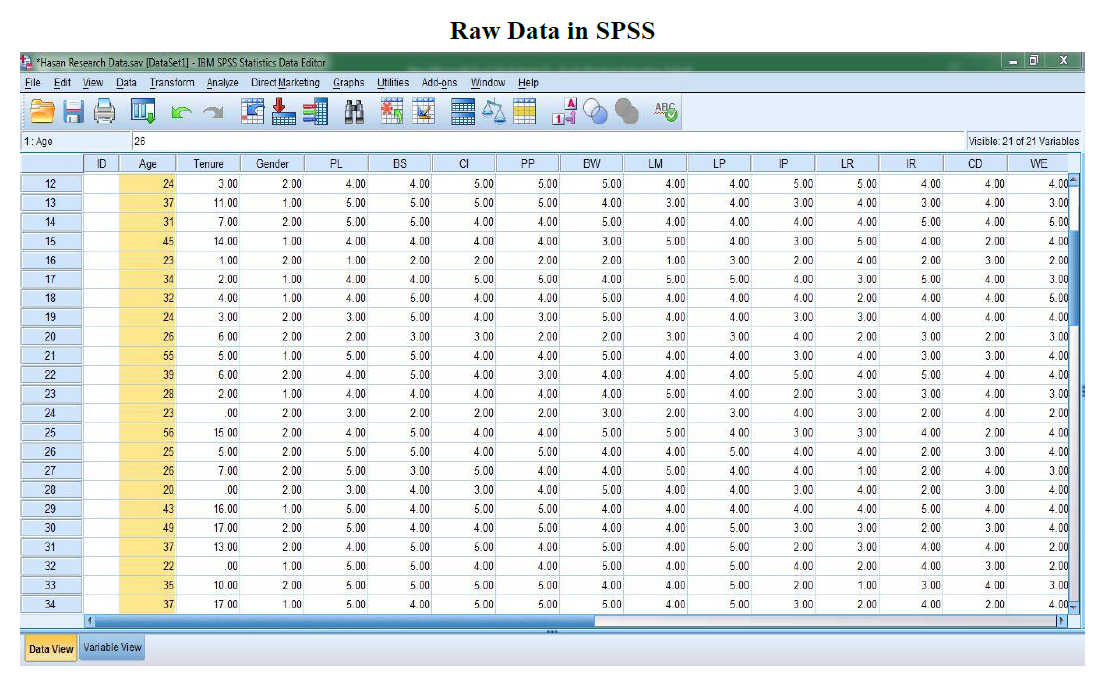
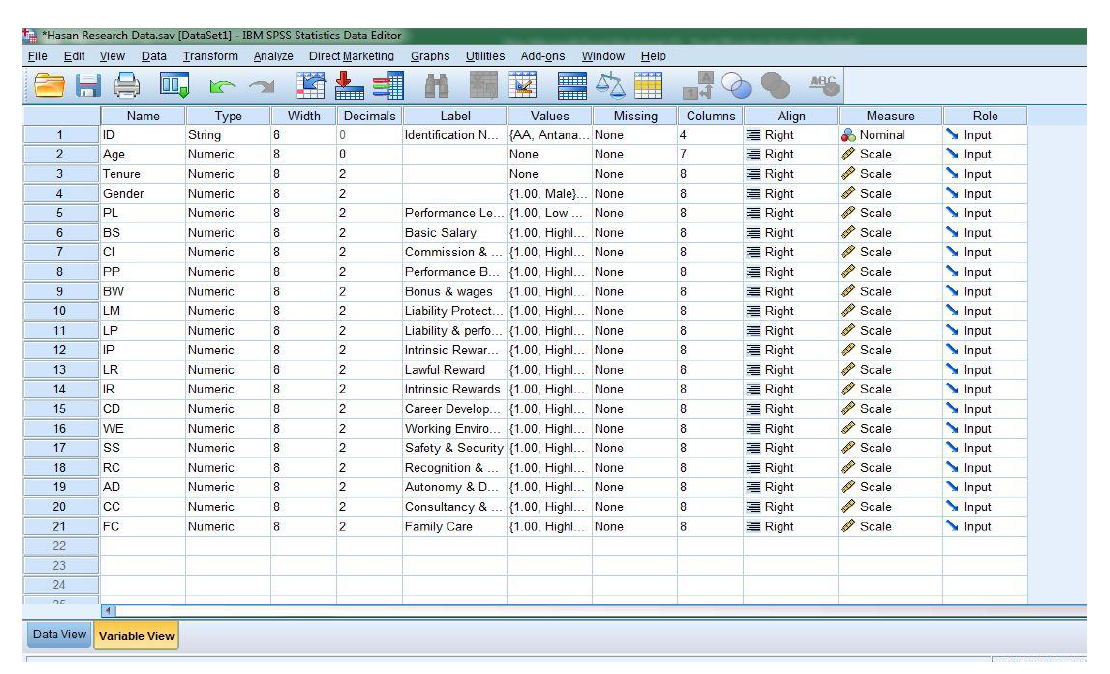
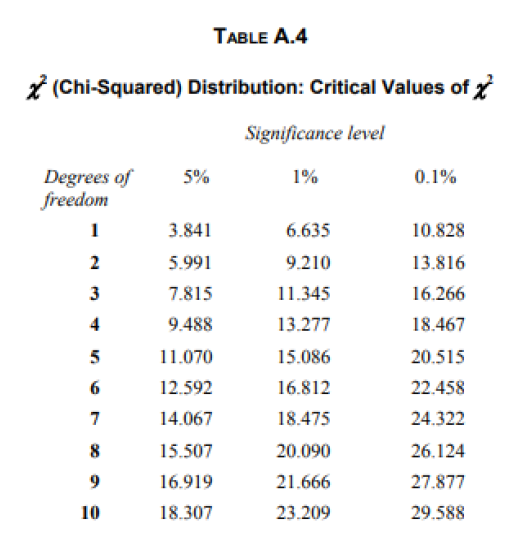
References
- Abdullah, Md. Abu, Y. (2018), International Trade Implications and Future of Ready- Made Garments Sector of Bangladesh, Journal of Business Administration, Vol.23, No.3 & 4, page 41-69.
- Absar, S.S. (2011). “Problems Surrounding Wages: The Ready-made Garment Sector in Bangladesh.” Labour and Management in Development Journal 2, no. 7.
- Azim, M. Tahlil, & Nasir Uddin, (2003), Challenges for Garments Sector in Bangladesh after (2004): Avenues for Survival and Growth‖, Bangladesh Institute of International and Strategic Studies Journal, Vol.24, No. 1, page 49-82.
- Akter, A., (2019). Employment trends in 2018 in Bangladesh textile and apparel industry, Dhaka Textile Today.
- Allen, D.G., Shore, L.M., & Griffeth, R.W. (2003). The Role of Perceived Organizational Support and Supportive. Human Resource Practices in the Turnover Process. Journal of Management, 29, 99-118.http://dx.doi.org/10.1177/014920630302900107
- Boivie, S., Bednar, M.K., & Barker, S.B. (2012). Social comparison and reciprocity in director compensation. Journal of Management, Banking Research, 2(2), 24.
- Carolyn Wiley, (1995). What motivates employees according to over 40 years of motivation surveys? International Journal of Manpower18(3):263-280.
- Centre for Policy Dialogue, (1999), The Textile and Clothing Industry of Bangladesh: In a changing World Economy, CPD Dialogue Report No.18, Dhaka, Bangladesh.
- Coates, J., Davis, T. & Stacey, R., (1995). Performance measurement systems, incentive reward schemes and short-termism in multinational companies: a note. Management Accounting Research, 6(2), pp.125-135.
- Clark, C., & Kanter, S. (2014). Violence in the Readymade Garments (RMG) Industry in Bangladesh.
- Deci, E.L. (1972). The effects of contingent and non-contingent rewards and controls on intrinsic motivation. Organizational behavior and human performance, 8(2), 217-229.
- Database.dife.gov.bd. (2020). RMG Factories Ananta Apparels Ltd. [online] Available at: http://database.dife.gov.bd/index.php/factories/alliance-assessed/details/4/485 [Accessed 19 Feb. 2020].
- Dragana Jovanovic, Marina Matejevic (2014). Relationship between Rewards and Intrinsic Motivation for Learning – Research Review. Procedia -Social and Behavioral Sciences. 149(2). 456-460.
- Elizabeth Boye Kuranchie-Mensah, K.A.T. (2015). Employee Motivation and Work Performance: A Comparative Study of Mining Companies in Ghana. Journal of Industrial Engineering and Management, 9(2), p. 25.
- Fay, C.H. & Thompson, M.A., (2012). Contextual Determinants of Reward Systems’ Success: An Exploratory Study, Human Resource Management, 40(3), 213-226.
- Faruque, H. (2014). RMG industry of Bangladesh: Past, present and future. Dhaka Tribune,
- Retrieved from http://www.dhakatribune.com/long- form/2014/sep/19/rmg-industry-bangladesh-past-present-and-future#sthash.72yJndaL.dpuf.
- Gerald E. Ledford Jr. Barry Gerhart, Meiyu Fang, (2013). Negative Effects of Extrinsic Rewards on Intrinsic Motivation: More Smoke than Fire. Word of work Journal, second quarter.
- Galbraith, J.K. (1973). Controls or competition-what's at issue? The Review of Economics & Statistics, 55(4), 524–538.
- Goodale, J.C., Koerner, M., & Roney, J. (1997). Analyzing the impact of service provider empowerment on perceptions of service quality inside an organization.
- Griffin, R.W. (1990), Management, 3rd ed., Houghton Mifflin Company, Dallas, TX, p. 437.
- Herzberg, F. (1987), “Workers’ needs: the same around the world”, Industry Week, 21 September, pp. 29-30, 32.
- Hill, K.G., Hennessey, B.A., & Tighe, E.M. (2014). The work preference inventory: Assessing intrinsic and extrinsic motivational orientations. Journal of Personality & Social Psychology, 66(5), 950–967.
- Harpaz, I. (2019). The importance of work goals: An international perspective. Journal of International Business Studies, 21(1), 75-93.
- Islam, M.S., (2013). Labor incentive and performance of the industrial firm: A case study of Bangladeshi RMG industry. IOSR Journal of Business and Management, 7(3), pp. 52-63.
- Jakir Hossain, Mostafiz Ahmed, & Afroza Akter. (2010). “Decent Work and Bangladesh Labour Law: Provisions, Status, and Future Directions”. BILS.
- Jensen, Michael C. Meckling, William H. July (1976). “Theory of the Firm: Managerial Behaviour, Agency Costs and Ownership Structure” University of Rochester, Rochester, NY 14627, U.S.A.
- Kanfer, R. (1992), “Work motivation: new directions in theory and research”, in Cooper, C.L. and Robertson, I.T. (Eds), International Review of Industrial and Organizational Psychology, Vol. 7, Wiley, London, pp. 1-53.
- Karmaker, C.L, Halder, P.K, Kundu, B., Daniel T., (2018). Evaluation of Factors Affecting the Productivity of RMG in Bangladesh: A Fuzzy AHP Approach. International Journal of Research in Industrial Engineering. Vol. 7 (1) 51-60.
- Klein, B.D., Goodhue, D.L., & Davis, G.B. (1997). Can humans detect errors in data? Impact of base rates, incentives, and goals. MIS Quarterly, 21(2), 169-194.
- Kotelnikov, V. (2010). Reward Systems & Reward Motivation (Effective reward systems: Increasing performance & Creating Happier Employees).
- Retrieved from http://www.100ventures.com/businessguide/crosscuttings/motivating-reward system.html.
- Lazear, E.P., Shaw, K.L. & Stanton, C.T. (2015). The value of bosses. Journal of Labor Economics. Vol. 33, No. 4, pp.823-861
- Mizanuzzaman, M. (2016). Loss and Damage Assessment in the Context of Fire Hazards: A Study on Selected Garment Factories in Bangladesh. International Journal of Finance and Banking Research, 2(2), 24.
- Mottaleb, K.A. & Sonobe, T., (2011). An inquiry into the rapid growth of the garment industry in Bangladesh. Economic Development and Cultural Change, 60(1), pp.67-89.
- Özutku, H., (2012). The influence of intrinsic and extrinsic rewards on employee results: An empirical analysis in Turkish manufacturing industry. Business and Economics Research Journal, 3(3), pp.29-48.
- RMG Sector Database. (2020). Status of Safety Assessment and Remediation, May 2018. [online] Available at: http://database.dife.gov.bd/index.php [Accessed 19 September. 2020].
- Rizwan M.M. (2016). Impact of Rewards (Intrinsic and Extrinsic) on Employee Performance with
- Special Reference to Courier Companies. European Journal of Business and Management , 8(25), pp. 88-89.
- Rizwan, Q.D.M. (2015). Effect of intrinsic rewards on task performance of employees: Mediating role of motivation. International Journal of Organizational Leadership, 4(5), pp. 33-36.
- Shaheen, A.D. (2016). HRM Practices-Engagement-Performance Relationships: A Conceptual Framework for RMG Sector in Developing Economy. Mediterranean Journal of Social Sciences, 7(4), pp. 87-90.
- Stajkovic A. & Luthans F. (2014). Differential Effects of Incentive Motivators on Work Performance. The Academy of Management Journal. Vol. 44, No. 3. pp. 580─590.
- Trevor, J. (2011). Can pay be strategic? A critical exploration of strategic pay in practice.
- New York: Palgrave Macmillan. International Journal of Business and Management, Vol. 7, No. 3, 1833-8119
- Thouhidur Rahman, M., (2017). Readymade Garment Industry in Bangladesh: Growth, Contribution and Challenges. IOSR Journal of Economics and Finance (IOSR-JEF), 8(3), p. 23.
- Yang, H. (2018). Efficiency wages and subjective performance pay. Economic Inquiry, 46(2), 179–196.
- Walters, T. & Ngwa, B., (2019). Effect of Reward System on Employee Performance among Selected Manufacturing Firms in the Litoral Region of Cameroon. Academy of Strategic Management Journal, 18(3), p. 55.
